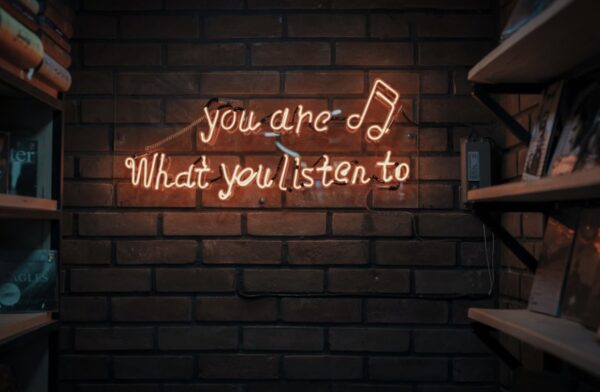Have you ever found yourself talking, yet no one seemed to listen? Well, dear reader, don’t despair: there are solutions out there to make effective communication as part of everyday life! Ready for an entertaining journey into effective communication? Be prepared – it could be fun!

Storytelling: Paint a Picture with Words
Everyone enjoys a good tale. From cave walls to corporate boardrooms, storytelling has long been the core of human communication. Do don your bard’s hat and tell a tale that underpins your message – a good tale can serve as a Trojan Horse that subtly delivers wisdom under cover of entertainment!
Metaphorical Magic
An effective metaphor can illuminate complex ideas simply and elegantly. No wonder then that figurative language has long been the cornerstone of great communicators – so don’t be shy to use metaphors occasionally – they might help you bring your message alive!
Listen Before You Speak
Active listening is more than a virtue – it’s an absolute superpower! Listening can act as the decoder ring to other people’s thoughts, feelings and needs – so make sure you practise active listening in all of your interactions – it will improve communication skills as well as build empathy between individuals and help you become a master communicator in no time!
Play with Language
Do words tickle you pink? Why not have some fun with them? From puns to poems, language offers endless ways of getting your message across – why not experiment with different uses and see where that takes you? So try some tongue twisters and see where they lead!
Be Concise: Less is More
Long, drawn-out speeches might have worked for Cicero, but in our world of 280-character tweets and TikTok videos, brevity is key for effective communication. Therefore, use simple language to get straight to the point, thus making your message clearer and more powerful.
Silence is Golden
While spoken words can be powerful tools, sometimes silence speaks louder. Consider: when was the last time you had a meaningful dialogue without saying a simple word? Pauses within conversations can give listeners time to reflect and build deeper connections.
Trust Your Gut
Listen to that little voice inside of you that’s telling you that something might not be quite right – they may be trying to warn you away from making costly errors! Like the example or comparison you are about to use might be completely left centre to what your audience is.
Speak Up and Stand Out
It can be easy to become lost in the noise, but if you want people to listen and remember what you say, you need to stand out. Don’t hesitate to let people hear what’s important to you by speaking up; speaking up can capture their attention and ensure they remember what was said.
Visual Aids: A Picture is Worth a Thousand Words
Images can often communicate your message more quickly and clearly than words alone can. Imagine replacing a manual with a how-to video! Enlist the assistance of a video production company, photographer or friends to create visuals that will bring out your message more strongly.
Keep it Personal
Engaging directly with an individual and showing genuine interest in what they have to say can make all the difference between being lost in the crowd and building lasting relationships with people. A simple note thanking them or simply greeting them goes a long way toward spreading your message effectively.
Get Creative
Don’t be intimidated to try something different when it comes to communication – be bold enough to think outside the box and break free of routine! From creating elaborate metaphors to bring your message alive through props or costumes, creativity can help set your message apart and make it even more memorable.
Join the Conversation
Instead of talking at people directly, try joining existing conversations – both online and in person. Doing this can help you form relationships with like-minded individuals while deepening your knowledge on any topics being discussed by your target group. Plus, doing so increases the odds that people will listen when you share your message!
Body Language: Silence Speak Volumes
More than 50% of communication takes place nonverbally; body language, facial expressions and even silence all play an integral part. Keep in mind that your body is always on display – even when your mouth is closed!

Create Your Signature Style
Your message is more likely to make an impactful statement when delivered in your own unique voice – one that resonates with those around you and reinforces who and what you stand for. Your words will come across more sincerely when spoken through this unique channel and people can quickly recognize who and what stands behind the words spoken out of your mouth.
Feedback: Two-Way Street
Communication should never be one-sided. Solicit feedback from your listeners in order to ensure your message is understood and appreciated by them. Allow for questions and comments, as it shows you respect others’ opinion as well as demonstrate that your solution may not fit all circumstances.
Repetition: The Mother of Retention
Repeating key points will reinforce your message so that audiences remember what was discussed throughout a discussion, increasing retention. Use repetition of key phrases or ideas throughout dialogues to strengthen and support your point.
Follow Up
After sharing your message, follow up with those it impacts and those most in need of it. This could involve using email, text messaging, online chat or social media – whatever works best for both of you – in order to demonstrate care while answering any lingering queries or address concerns about what was said.
Make Connections
One of the best ways to spread your message is by building relationships with like-minded individuals. Establishing relationships with those who share similar values and interests will amplify your message to reach more people – network! Don’t be shy; venture out there and meet new people!
Engage in Discussions
Participating in conversations that relate to your message or goals can help foster relationships while providing you with an opportunity to spread it further. In addition, participating in these discussions could give you valuable insights from fellow participants that could help refine it further.
Humour: The Spoon of Sugar
A good joke can soothe even the hardest hearts, while using humour can transform monologue into dialogue. Just like salt in food, humour adds flavour but too much can ruin it altogether – don’t be afraid to use humour to engage and excite your audience!
Emotion: The Heart of the Matter
Integrating emotion into your communication is like adding colour to a black-and-white film – it brings everything alive. Be it happiness, anguish or inspiration – emotional connections make your message resonate on a deeper level and can make an impressionable impression with listeners and readers. People remember how you made them feel, so don’t shy away from using emotion when communicating to make your message more memorable – express passions and feelings, add humour as necessary and don’t be shy when sharing stories!
An Analogy Can Bridge the Understanding Gap
Analogies provide a bridge, helping your audience cross from unfamiliar territory into more easily digested concepts or abstract ideas. Use them freely when explaining complex or abstract topics – they serve like a GPS guiding them all the way towards understanding.
Empathy: the Gateway to Connection
Empathy is the cornerstone of a relationship – it allows us to comprehend another person’s perspective and form meaningful bonds. Put yourself in your audience’s shoes and view your message through their eyes, to create more captivating, relatable arguments that resonate with your audience.
Be Authentic: Keep It Real
Being authentic is key in making your message credible; people can immediately detect a fake from a distance. Stay true to yourself and your audience – authenticity stands out like a signature scent, distinctive and memorable; not forgetting sincerity makes your audience feel safe and appreciated.
Gestures: Orchestrate Your Communication
Gestures can add emphasis and clarity to the spoken words you present – but use them sparingly or else they can distract your audience! You don’t want them missing out on key points you want to get across.
Finish with a Flourish
Aim to end on a high note when communicating, creating an impressionable experience for both listeners and speakers alike. Use call-to-action statements or inspiring statements that leave your audience motivated and energised as the cherry on top. Consider including music into your presentation – finding songs that capture the tone and emotion of your message will add another powerful dimension. When selecting musical accompaniment for your presentation, look for tracks that will highlight specific points during presentation time – they can add extra punch! Music adds both emotion and depth of communication that speaks columns when words cannot alone do.

Communication is more than simple stringing words together; it is an art, dance and orchestra of verbal and nonverbal cues working in concert to make your message come through clearly. So the next time you feel as though your message is falling on deaf ears, remember these 26 tips; with practice and creative expression you’ll soon be creating masterpieces with words! Until then, keep talking, exploring and communicating; the world needs to hear what you have to say!
